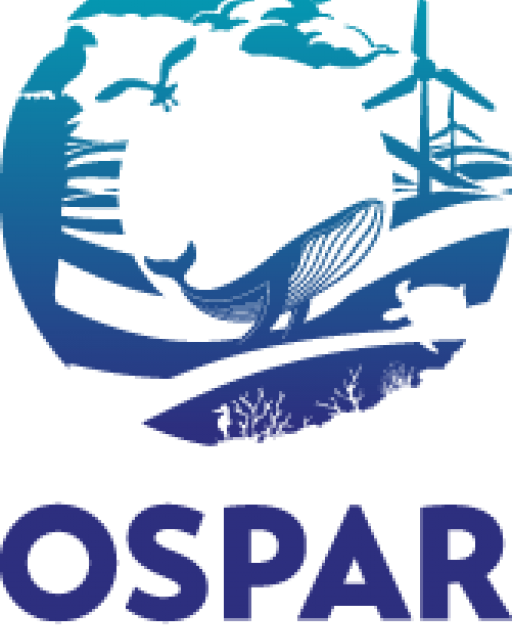CEMP
OSPAR’s Coordinated Environmental Monitoring Programme (CEMP) aims to deliver comparable data from across the OSPAR Maritime Area, which can be used in assessments to address the specific questions raised in OSPAR's Joint Assessment and Monitoring Programme, (JAMP).
The CEMP Agreement explains the overall aims and concepts that apply within the CEMP and the scope and characteristics of the six CEMP thematic monitoring programmes (themes).
OSPAR Coordinated Environmental Monitoring Programme (Agreement 2016-01)
CEMP Guidelines
The CEMP Guidelines provide detailed documentation of agreed monitoring and assessment methods.
Following the adoption of the broadened Coordinated Environmental Monitoring Programme (CEMP) in 2016, it was agreed that the previously developed Guidelines then termed JAMP guidelines will become CEMP Guidelines. As the existing JAMP Guidelines are reviewed their names are changed from "JAMP Guidelines" to “CEMP Guidelines”.
CEMP Appendices
The CEMP Appendices set out details of the agreed monitoring and assessment approaches for each component of these themes including the approaches to be applied to realise coordination of monitoring and assessment. The CEMP Appendices have been adapted to align with the European Commission’s requirements for MSFD reporting and are available in the OSPAR Assessment Portal (OAP). The purpose is to assist those Contracting Parties that are EU member states in their national reporting commitments for MSFD Article 11 Monitoring Programmes. The CEMP Appendices are also included as metadata for the relevant data layers in ODIMS.
Biodiversity & Ecosystems CEMP Guidelines
Please note, CEMP Guidelines for the OSPAR biodiversity common indicators reflect the current stage of development of the indicators and have been published with the understanding that the CEMP Guidelines will be revised as the indicators are further developed.
Guidelines on Quality Assurance for Biological Monitoring in the OSPAR Area (Agreement 2002-15)
CEMP Guideline: Common Indicator - Marine Bird Abundance (B1) (Agreement 2016-09)
CEMP Guideline: Common Indicator - Marine Bird Breeding Productivity (B3) (Agreement 2016-10)
CEMP Guideline: Common Indicator - Seal Abundance and Distribution (M3)(Agreement 2016-11)
CEMP Guideline: Common Indicator - Grey Seal Pup Production (M5) (Agreement 2016-12)
CEMP Guideline: Common Indicator - BH3 Extent of Physical damage to predominant and special habitats (Agreement 2017-09). Update 2022-23
CEMP Guideline: Common Indicator - PH1/FW5 Plankton lifeforms (Agreement 2018-07)
CEMP Guideline: Changes in phytoplankton biomass and zooplankton abundance (PH2) (Agreement 2019-06)
CEMP Guideline: Changes in plankton diversity (PH3) (Agreement 2019-07)
CEMP Guideline: Marine mammal by-catch (M6) (Agreement 2022-03)
CEMP Guideline: Sensitive fish species (FC1) (Agreement 2022-04)
CEMP Guideline: Sentinels of the Seabed (BH1) (Agreement 2023-02)
CEMP Guideline for the MPA assessment calculation methodology (Agreement 2023-03)
CEMP Guideline: Area of Habitat Loss (BH4) (Agreement 2024-05)
CEMP Guideline Integration Methods
- CEMP Guideline for Marine Birds Thematic Assessment Integration Method (Agreement 2023-04)
- CEMP Guideline for Marine Mammals Thematic Assessment Integration Method (Agreement 2023-05)
- CEMP Guideline for Fish Thematic Assessment Integration Method (Agreement 2023-06)
- CEMP Guideline for Pelagic Habitats Thematic Assessment Integration Method (Agreement 2023-07)
Environmental Impacts of Human Activities CEMP Guidelines
- CEMP Guidelines for the assessment of dumping and placement of waste or other matter at sea
- CEMP Guidelines on Litter on the Seafloor
- CEMP Guidelines for Monitoring and Assessment of loud, low and mid-frequency impulsive sound sources in the OSPAR Maritime Region
- CEMP Guidelines for Monitoring and Assessment of plastic particles in stomachs of fulmars in the North Sea area
- CEMP Guidelines for Monitoring and Assessment of beach litter
- CEMP Guidelines for Monitoring and Assessment of marine litter ingested by sea turtles
- CEMP Guidelines for the Candidate Indicator on Ambient Underwater Noise
Hazardous Substances & Eutrophication CEMP Guidelines
- CEMP Guidelines on Quality Assurance for Biological Monitoring in the OSPAR Area (Agreement 2002-15). Revised in 2018/19
- CEMP Guidelines for Monitoring Contaminants in Sediments (Agreement 2002-16). Revision 2018
- Revised JAMP Eutrophication Monitoring Guideline: Oxygen (Agreement 2013-05) (Replaces Agreement 1997-03)
- Revised JAMP Eutrophication Monitoring Guideline: Nutrients (Agreement 2013-04) (Replaces Agreement 1997-02)
- JAMP Eutrophication Monitoring Guidelines: Chlorophyll a in Water (Agreement 2012-11) (Replaces Agreement 1997-04)
- CEMP Eutrophication Monitoring Guidelines: Phytoplankton Species Composition (Agreement 2016-06)
- JAMP Eutrophication Monitoring Guidelines: Benthos (Agreement 2012-12) (Replaces Agreement 1997-06)
- JAMP Guidelines for General Biological Effects Monitoring. Revised technical annexes 2007 (Agreement 2007-07)
- JAMP Guidelines for Contaminant-Specific Biological Effects (Agreement 2008-09) (Replaces Agreement 2003-10)
- CEMP Guideline on the analysis of PFASs in Seawater (Agreement 2010-08)
- CEMP Guidelines for Monitoring Contaminants in Biota (Agreement 1999-02). Revision 2018
- CEMP Guidelines for coordinated monitoring for hazardous substances (Agreement 2016-04). Revised in 2021
- CEMP guidelines for coordinated monitoring for eutrophication, CAMP and RID (Agreement 2016-05). Revised in 2021








